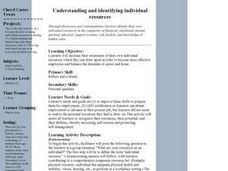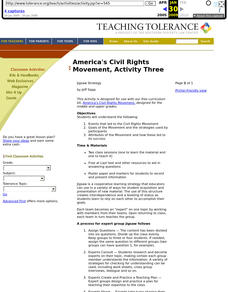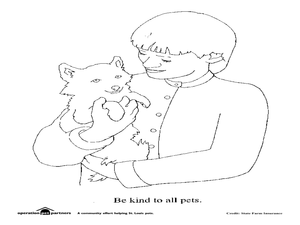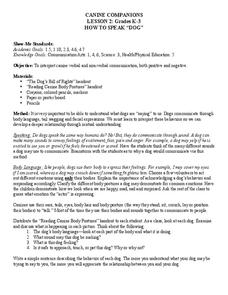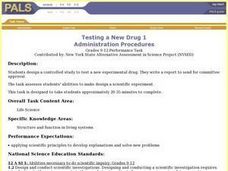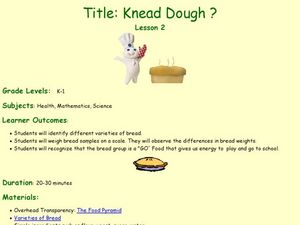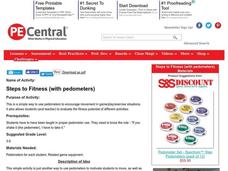Curated OER
Exploring the USA and the World with Cartograms
Middle schoolers investigate cartograms in order to explore the different countries on Earth. In this world geography activity, students use the Internet to analyze data on different cartograms. Middle schoolers compare data, such as...
Curated OER
Global Issues
Students explore the ways that local, national, and global events are interconnected. They identify current issues at a local and global level, identify organizations that seek to improve conditions in other countries, and examine the...
Curated OER
Understanding and Identifying Individual Resources
Students identify their own individual resources in the categories of financial, emotional, mental, physical, role models, knowledge of hidden rules, and support systems.
Curated OER
Transnational Pollution: Why Are You Dumping on Me?
Students research transnational pollution and role-play a hypothetical case of transnational pollution involving the Danube River. They practice, develop and defend a position in a debate and evaluate each other's presentations.
Curated OER
Canine Companions: Good or Bad? Proper Treatment of Dogs
Students explore the concept of proper canine treatment. In this social skills lesson, students decide if the teacher's statement about treatment of dogs is good or bad. Students then play games to show their new knowledge of the...
Curated OER
Depression Nutrition Plan
Students plan meals for a day based on their own caloric needs, make a shopping list, and "shop" on line. In this Great Depression nutrition plan instructional activity, students calculate their caloric needs and plan meals before...
Curated OER
America's Civil Rights Movement, Activity Three
Learners investigate the events that led to the Civil Rights Movement and the attributes of the movement that led to its success using the Jigsaw method.
Curated OER
The Cause & Effect Model
Students analyze the plot of the story, "The Little Engine That Could" to provide a model for writing creatively, developing critical essays, producing themes, and making predictions.
Curated OER
The IMF in Action: Who is the IMF?
Young scholars use the internet to examine IMF member countries. They work together in groups to read information about the different IMF representatives. They discuss what they have read.
Curated OER
How to Speak Cat
Students explore feline communication. In this comprehension lesson, students discuss how to read animal body language. Students look at images of cats and decide what the animal is trying to say.
Curated OER
Where the Wild Things Shouldn't Be
Students compare and contrast wild and domestic animal needs. In this animal welfare lesson plan, students read the poem Where the Wild Things Shouldn't Be and create a list of wild and domestic animals. Students create a short play or...
Curated OER
Safety With Animals
Learners identify the proper way to care for animals. In this animal welfare lesson, students discuss the fact that animals have feelings. Learners read an article included in the lesson plant about animal feelings and ways to be gentle...
Curated OER
Canine Companions
Students interpret canine verbal and non-verbal communication. In this dog communication instructional activity, students discuss dog communication through bark and body language. Students study the 'reading canine body postures'...
Curated OER
Save the Earth: It's Everyone's Home!
Students research ways to conserve and reduce energy and resources. In this reducing waste lesson, students work in teams to experiment with water and losing resources. students brainstorm about ways to conserve and reduce energy and...
Curated OER
Women and Globalization
High schoolers explore the rights of women around the world. In this global issues lesson, students determine the role of the United Nations in staving off discrimination against women. High schoolers research UN efforts to curb...
Curated OER
Delve Into Diseases
Fifth graders research diseases that affect people all around the world and write about their research. In this diseases lesson plan, 5th graders answer questions about vaccines, facts, differences in diseases, and more.
Curated OER
Weather Awareness
Second graders investigate weather. In this weather lesson, 2nd graders discover how to read a temperature gauge, keep track of the weather, and find out how the weather affects their day. They work individually and in partners to make...
Curated OER
Feelin' Hot, Hot Hot!
Young scholars explore human anatomy by researching first aid care. In this heat related injury lesson plan, students discuss the problems extreme temperatures can cause on the human body if left untreated. Young scholars define the...
Curated OER
Character and Citizenship Education
Students analyze the importance of being a socially healthy citizen. In this character education instructional activity, students brainstorm personal traits that they think make the world a better place. Students compile their ideas as a...
Curated OER
Testing a New Drug 1
Students act as chief research scientists with the responsibility of testing a new drug. Students design a controlled experiment to test a hypothetical experimental drug. Students write a clear, concise, and detailed plan to present to a...
Curated OER
Worksheet 3. Reading: Type A Personality
In this reading comprehension activity, students read the descriptions of a Type A personality. They then answer the 4 questions at the bottom of the page.
Curated OER
Knead Dough?
Learners make bread and understand that bread gives us energy. For this bread lesson plan, students read the story A Trip to the Market, and learn about the importance of bread. Then they make the bread!
Curated OER
Steps to Fitness (with pedometers)
Students evaluate the fitness potential of different activities using pedometers in game/play/exercise situations.
Curated OER
Blood Pressure and Heart Disease
Students explore the major causes of heat attacks as the topics of the human circulatory system, blood pressure, heart disease, arteries and veins are examined. Opinions on the topics are developed as researched material is presented to...




